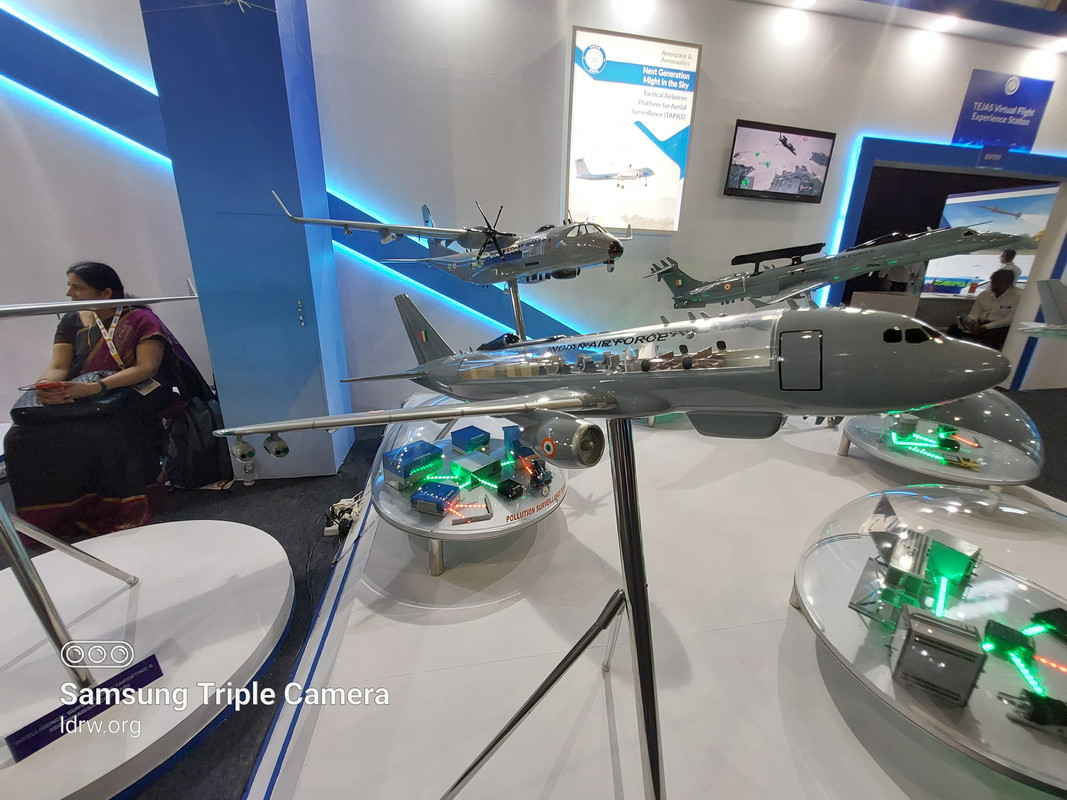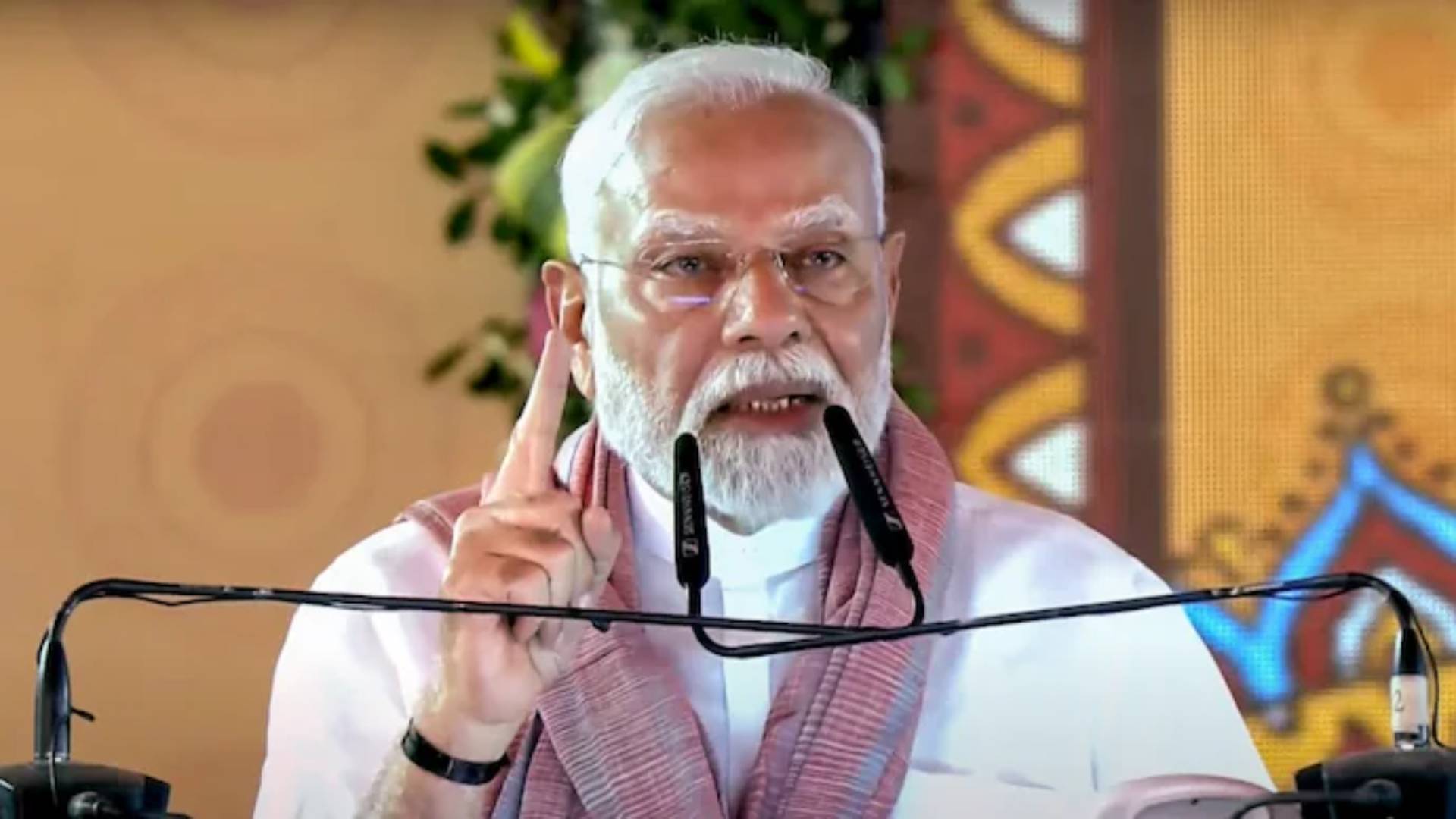SOURCE: RAUNAK KUNDE / NEWS BEAT / IDRW.ORG


Hindustan Aeronautics Limited (HAL)’s 2-ton CATS Warrior loyal wingman, currently under development, is poised to revolutionize the Indian Air Force’s (IAF) operational strategy by integrating advanced weaponry and cutting-edge avionics.
Designed to operate alongside manned fighter jets like the HAL Tejas, the CATS Warrior is evolving into a versatile platform capable of carrying not only the Advanced Short-Range Air-to-Air Missile (ASRAAM) but also the indigenous Astra Mk1 Beyond Visual Range Air-to-Air Missile (BVRAAM). With an enhanced payload capacity and sophisticated guidance options, this unmanned combat aerial vehicle (UCAV) promises to extend the IAF’s reach and lethality while keeping pilots out of harm’s way.
Continue readingSOURCE: RAUNAK KUNDE / NEWS BEAT / IDRW.ORG


As part of its strategic roadmap to bolster capabilities along its volatile borders with China and Pakistan, the Indian Air Force (IAF) has outlined its key acquisition priorities for the financial year 2025-26.
Among these is the procurement of three advanced Signal Intelligence (SIGINT) and Communication Jamming (COMJAM) aircraft, a move aimed at enhancing the IAF’s electronic warfare (EW) and intelligence-gathering prowess. Signals and Communications Aircraft (SCA), a long-endurance, multi-mission platform will be based on the pre-owned Airbus A321 airframe. This aircraft promises to deliver cutting-edge passive intelligence collection and signal jamming capabilities, reinforcing India’s aerial dominance in contested regions.
Continue readingSOURCE: RAUNAK KUNDE / NEWS BEAT / IDRW.ORG


In a significant development for India’s defense procurement strategy, the Indian Army has recommended that the Ministry of Defence (MoD) abandon plans to procure Stryker Armored Personnel Carriers (APCs) from the United States, following disappointing trial results. Instead, the Army is throwing its weight behind an improved indigenous variant of the Wheeled Armoured Platform (WhAP) 8×8, known as the Advanced Armoured Platform (AAP) Wheeled, developed collaboratively by the Defence Research and Development Organisation (DRDO) and private sector partners.
The Stryker, an 8×8 wheeled infantry fighting vehicle manufactured by General Dynamics Land Systems, was initially considered for induction into the Indian Army through a government-to-government (G2G) deal with the United States. However, trials conducted in high-altitude terrains, such as those in Ladakh, revealed significant shortcomings. Powered by a Caterpillar C7 360 hp engine, the Stryker struggled with underperformance in mountainous regions, a critical operational requirement for India given its border disputes with Pakistan and China. Reports from February 2025 highlighted the vehicle’s inability to meet the Army’s expectations, with sources noting its logistical simplicity—designed for U.S. expeditionary warfare—did not translate well to India’s diverse and rugged combat environments.
Continue readingSOURCE: AFI
)

India’s indigenous aircraft carrier, INS Vikrant, designed to operate MiG-29K and LCA Navy aircraft, is now eyeing the integration of the advanced Rafale-M fighter jet. However, to ensure compatibility with the carrier’s compact infrastructure, both the Rafale-M and the flight deck require specific modifications. These adjustments are critical to accommodate the jet on Vikrant’s elevators and optimize its performance on the ski-jump-equipped carrier.
INS Vikrant’s elevators, designed for the smaller dimensions of MiG-29K and LCA Navy aircraft, pose a challenge for the Rafale-M. The French jet, with its larger wingspan and distinct configuration, requires modifications to fit on the carrier’s compact lifts. “The lifts would need some modifications for the Rafale-M to fit in,” a defense source confirmed. These elevators are vital for transferring aircraft and equipment between the hangar below and the flight deck above, making their compatibility with Rafale-M a priority.
Continue readingSOURCE: AFI


Pakistan’s Defense Minister Khawaja Asif claimed that Pakistan Air Force (PAF) J-10CE fighter jets, possibly equipped with the KG600 jamming pod, successfully disrupted the radar and communication systems of four Indian Air Force (IAF) Rafale jets patrolling near the Line of Control (LoC) in Kashmir. The assertion, which suggested that the Chinese-made J-10CE overwhelmed the Rafale’s advanced Thales RBE2 Active Electronically Scanned Array (AESA) radar, sparked widespread skepticism and ridicule on social media and among defense analysts.
Critics pointed to the technological superiority of the Rafale’s SPECTRA electronic warfare (EW) suite and dismissed Pakistan’s claims as exaggerated propaganda, highlighting the limitations of the KG600 jammer and Chinese EW technology.
Continue readingSOURCE: AFI


Amid escalating tensions with India following the April 22, 2025, Pahalgam terrorist attack that killed 26 civilians, the Pakistan Navy has reportedly requested the deployment of 12 Pakistan Air Force (PAF) F-16 Block 52 fighter jets to defend its ports and warships against potential attacks from the Indian Navy’s MiG-29K carrier-based fighters.
This request, reported by defense sources close to AFI, comes as India deploys its aircraft carriers, INS Vikrant and INS Vikramaditya, in the Arabian Sea, signaling robust maritime power projection. However, the F-16 Block 52, primarily a land-based multirole fighter, lacks configuration and expertise for anti-ship missions over open waters, raising questions about the Pakistan Navy’s strategy. This article analyzes the rationale, feasibility, and implications of this deployment, situating it within the broader context of India-Pakistan naval and air dynamics.
Continue readingSOURCE: AFI


India’s pursuit of self-reliance in aerospace through the Advanced Medium Combat Aircraft (AMCA) program—a 5.5-generation stealth fighter—has reached a critical juncture. With global powers like the United States, China, and Europe advancing sixth-generation fighter technologies, India faces the challenge of keeping pace while addressing regional threats from China’s J-20 and emerging platforms.
A potential collaboration with the UK-led Tempest program, part of the Global Combat Air Programme (GCAP) involving Japan and Italy, could provide a transformative boost to India’s AMCA program. By securing access to Tempest’s advanced engine technologies with local production rights, India could not only enhance the AMCA but also lay the foundation for sixth- and seventh-generation fighter jets through 2060.
Continue readingSOURCE: PTI
)

High altitude platforms like solar power drones, balloons, airships, etc, can provide secure and flexible coverage at lower cost compared to satellites, a senior official of telecom industry body COAI said.
Cellular Operators Association of India (COAI) Director General S P Kochhar said countries like the US, Japan, the UK, and companies like Airbus (Zephyr) and SoftBank are investing heavily in HAPS technologies and India should start working on regulatory framework for HAPS operations, spectrum allocation and airspace management.
Continue readingSOURCE: PTI
)

The Border Security Force is all set to get the government’s final nod to raise 16 more battalions, comprising around 17,000 troopers, and set up two forward headquarters for its western and eastern commands guarding the Pakistan and Bangladesh frontiers, respectively, official sources have said.
The plan has already received an in-principle approval. Once sanctioned, it will be a shot in the arm for the force that has heightened vigil in the east following last year’s fall of the Sheikh Hasina government in Bangladesh and in the wake of a renewed challenge on the Pakistan front after the April 22 Pahalgam massacre.
Continue readingSOURCE: PTI


India has stanched the flow of water through the Baglihar Dam on the Chenab River and is planning similar measures at the Kishanganga Dam on the Jhelum River, a source said. The source familiar with the matter said these hydroelectric dams, Baglihar in Ramban in Jammu and Kishanganga in north Kashmir, offer India the ability to regulate the timing of water releases.
India’s decision to suspend the decades-old treaty follows the killing of 26 people, mostly tourists, in a terror attack in Jammu and Kashmir’s Pahalgam.
Continue readingSOURCE: PTI

Defence Minister Rajnath Singh on Sunday said it is his responsibility to work with the armed forces and give a “befitting reply” to those who cast an evil eye on India, his remarks coming in the backdrop of the recent Pahalgam terror attack.
Addressing an event in Delhi, Singh said people know Prime Minister Narendra Modi very well and are quite familiar with his working style, his determination and the way he has learned to “take risks” in his life.
Continue readingSOURCE: PTI

Iranian Foreign Minister Abbas Araghchi will arrive in Pakistan on Monday on a day-long visit to Islamabad ahead of his trip to New Delhi, media reports said on Sunday, amid tensions between India and Pakistan following the deadly Pahalgam terror attack.
Araghchi, accompanied by a high-level delegation, will have a key session with Pakistani Foreign Minister Ishaq Dar, the Express Tribune newspaper reported, quoting diplomatic sources.
Continue readingSOURCE: IANS


In a significant development against the backdrop of escalating tensions with Pakistan, Air Chief Marshal A.P. Singh on Sunday met Prime Minister Narendra Modi at his official residence at 7, Lok Kalyan Marg, sources said.
The meeting, which went on for 45 minutes, comes in the aftermath of the brutal terror attack in Pahalgam that claimed the lives of 26 innocent civilians, including 25 tourists and a local resident.
Continue readingSOURCE: PTI
)

Defence Minister Rajnath Singh will host his Japanese counterpart Gen Nakatani for wide-ranging talks on Monday against the backdrop of rising tensions between India and Pakistan over the Pahalgam terror attack and China’s persistent muscle-flexing in the South China Sea.
The defence ministry said the Indian and the Japanese sides will exchange “views and ideas” on the current regional and international security situation and discuss ways to further deepen the bilateral defence cooperation.
Continue readingSOURCE: PTI
)

Pakistan has decided to brief the UN Security Council on the latest regional developments in the wake of the Pahalgam terror attack, the foreign office said on Sunday.
Foreign Minister Ishaq Dar directed Pakistan’s UN Permanent Representative, Ambassador Asim Iftikhar, to take immediate steps to convene a meeting of the Security Council, the statement said. The decision comes amid tensions between Pakistan and India following the Pahalgam terror attack. Terrorists killed 26 people in Jammu and Kashmir’s Pahalgam on April 22, in the deadliest attack in the Valley since the Pulwama strike in 2019.
Continue reading